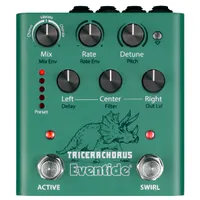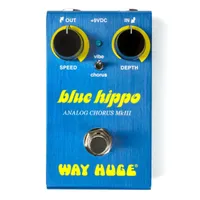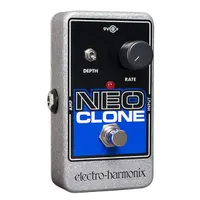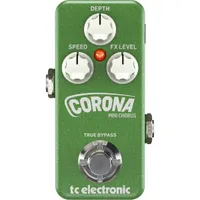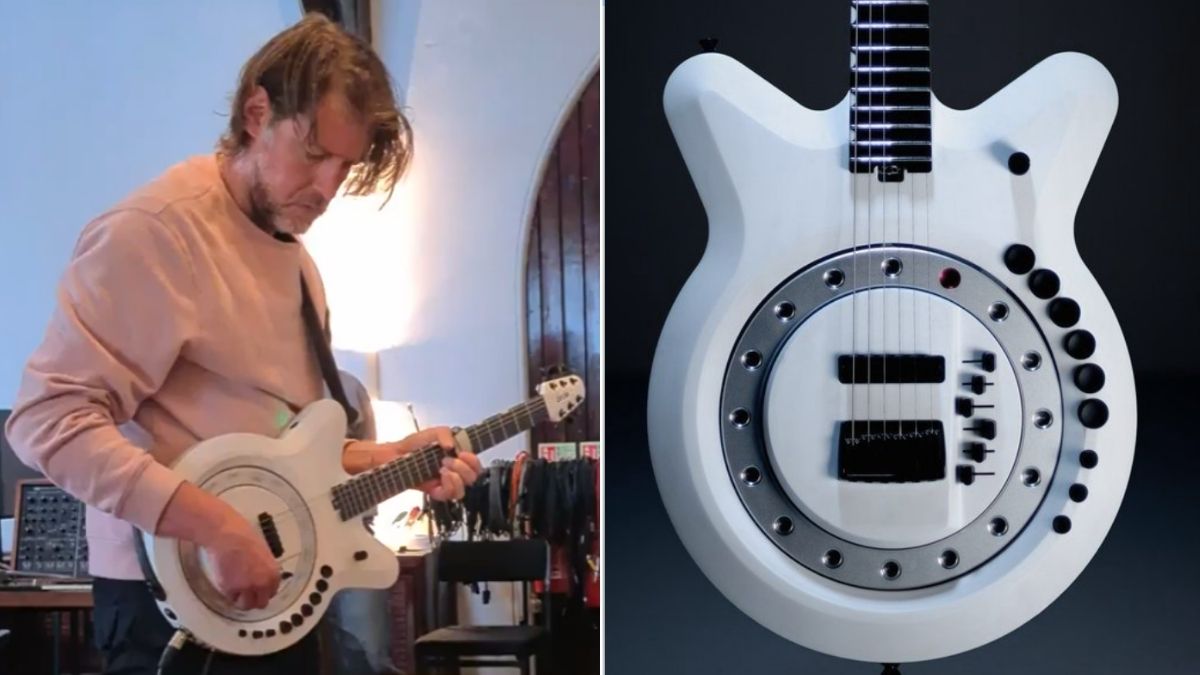Best chorus pedals 2025: top choices for your 'board
From analog to digital, and shimmery to subtle, let us show you the top chorus pedals you can buy today
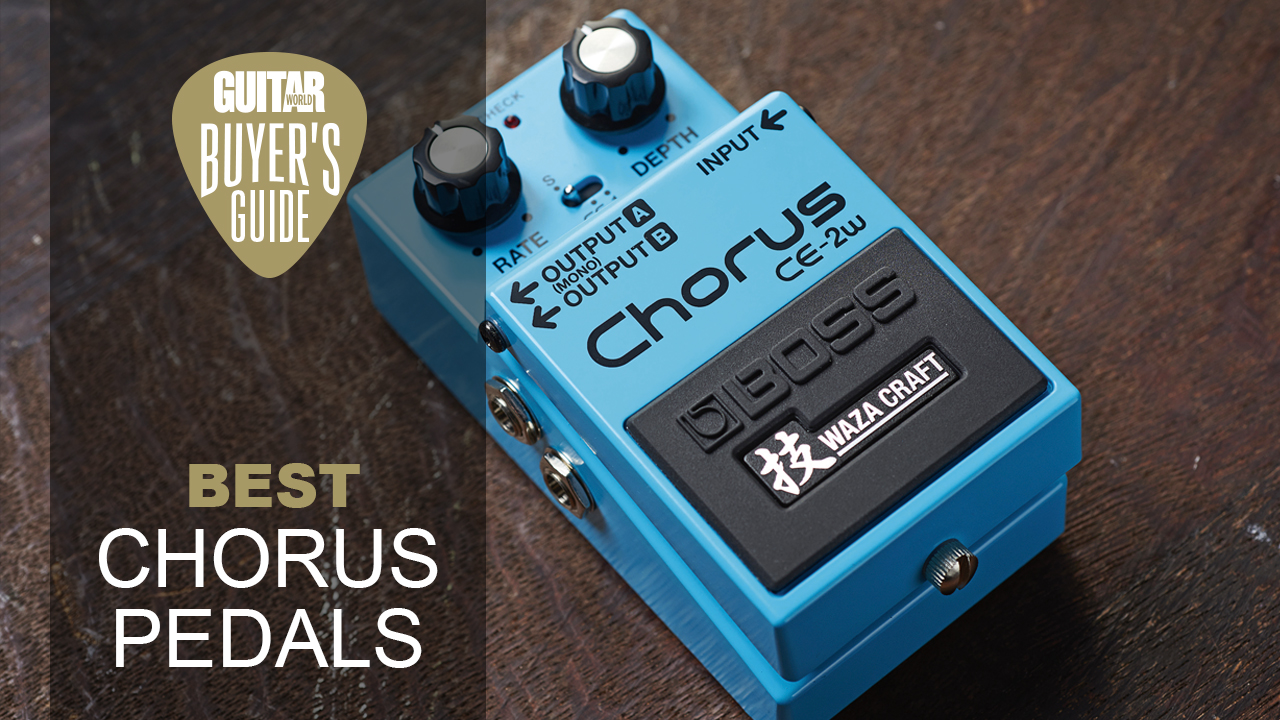
There was a time when the best chorus pedals were seen as dated, '80s-sounding effects, but they have gradually come back into fashion. It's an essential effect for psych bands, goth, and new wave, while tech metal bands obsessed with shoegaze can't avoid the pervasive use of subtle, or not-so-subtle, stereo chorus in that genre.
Elsewhere, art-metal giants like Deftones have been using the effect tastefully for years, while anybody exposed to studio production knows that it is useful for creating slight stereo movement on rhythm parts, or for creating double-tracking effects. With more and more guitarists also wearing a bedroom-producer hat, it's no surprise that the chorus pedals don’t cause the allergic reaction they once did.
Players from all genres have realized that chorus pedals can be used in more expressive ways. Due to the internal functioning of the chorus and flanger circuits, the two effects can often be wrung from the same box. Famously, the Police's Walking On The Moon chorus sound wasn't chorus at all – it was a flanger. Finally, the last decade has seen a massive increase in choice, meaning that many options for lush analog choruses exist, removing the need for tracking down rare vintage units to get 'that' sound. Conversely, sophisticated digital offerings offer innovative features never before seen on analog units.
Whether you're looking for a complex modulation workhorse or something simple and compact to spice up a single passage of a song, there are lots of options on the market. In particular, the number of space-saving mini options is large, meaning that this useful flavor effect is now more practical than ever. If you want to learn more about chorus pedals, have a look at our FAQs section for more info.
Our top picks
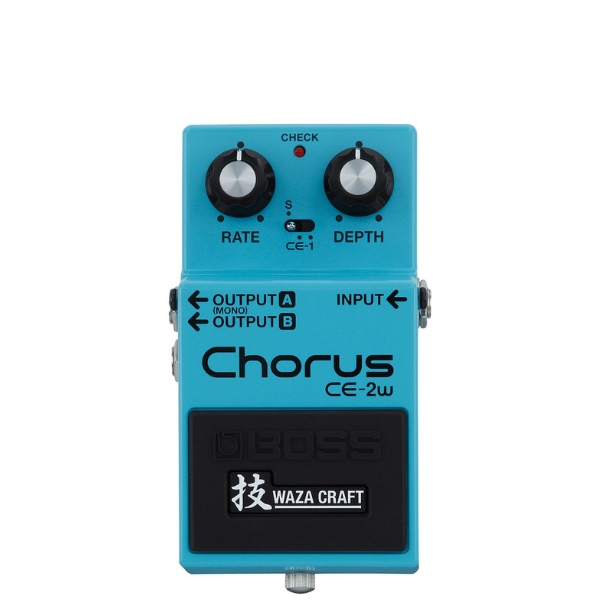
If you’re looking for the industry standard in chorus sounds, your search ends with Boss’s enhanced reissue of the classic CE-2. The CE-2W features a standard mode to recreate the thick, lush shimmer of the compact original, but adds a CE-1 mode to deliver another set of iconic Boss sounds, including vibrato.
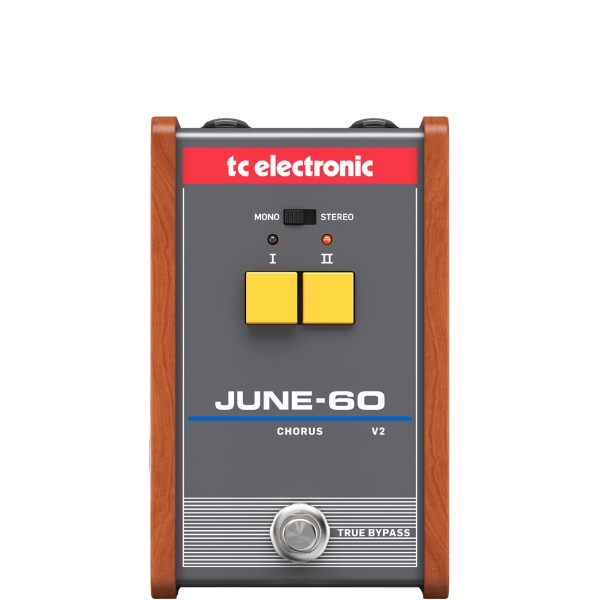
If you're seeking a no-frills chorus pedal that won't break the bank, then the June 60 is a great call. It sounds excellent, modeled on the rich, seductive chorus found on the ’80s Roland Juno synths. Consequently, it's equally at home on guitar and synth, with extra options available via external dip switches. It's even stereo via Y-cable.
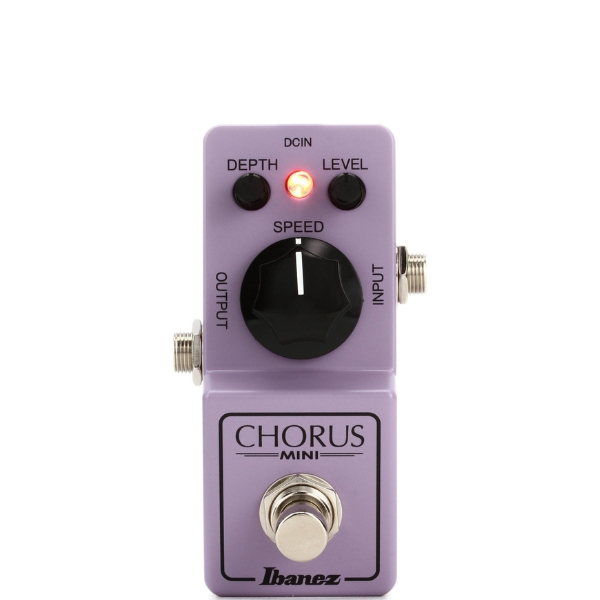
If you're after a chorus pedal that won't take up much room on your pedalboard, we'd go for the Ibanez Mini Chorus. Despite its small size it's suitably tough enough to take on the demands of living on a gigging 'board, coming in a robust metal housing. We love the variety of sounds available via its three knobs, and it's super simple to get up and running.
Best overall
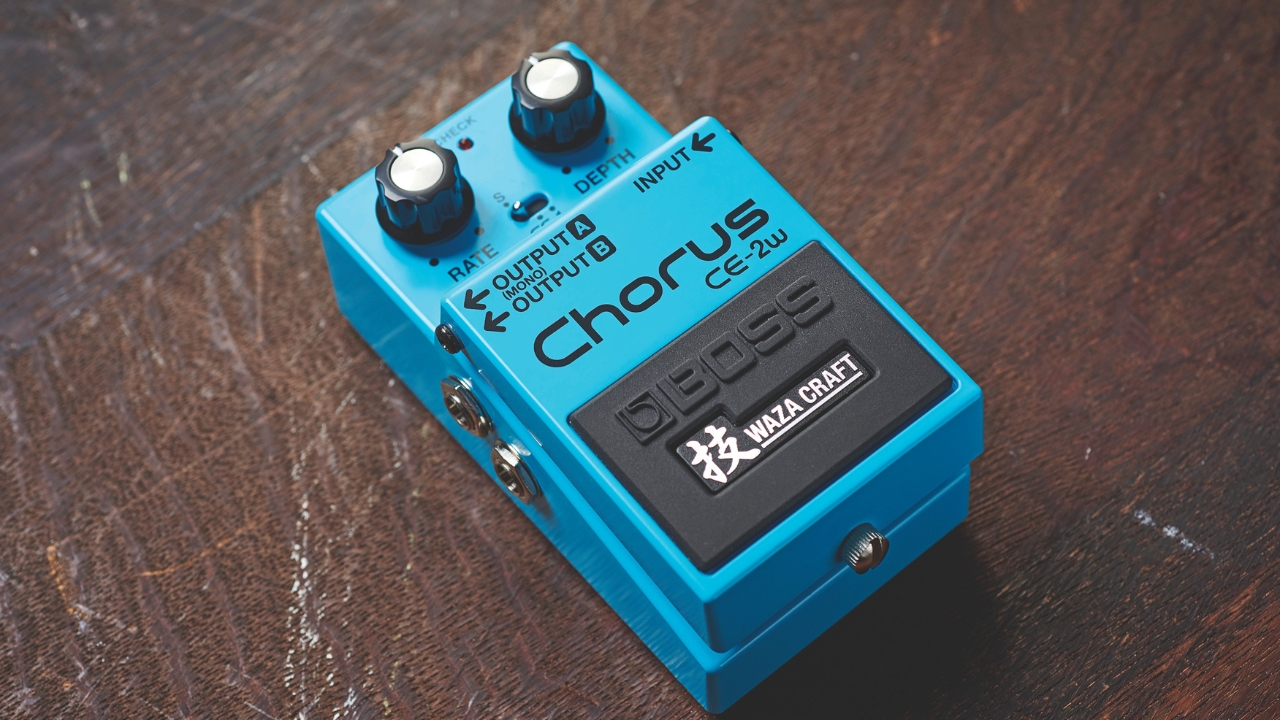
1. Boss CE-2W Waza Craft
Our expert review:
Specifications
Reasons to buy
Reasons to avoid
✅Buy if you want classic chorus tones: Widely regarded as the chorus pedal, the Boss CE-2 will give you those classic chorus tones of the 70s and 80s.
❌Avoid if you're on a budget: As this is a Waza-Craft version it's pretty pricey for a single pedal.
The Boss CE-2 Chorus, and its big brother predecessor the CE-1 (along with the same effect built into the Roland Jazz Chorus amp), defined the sound of chorus during the late '70s and '80s.
The CE-2W Waza Craft combines two Boss modulation pedals in one – the CE-2 and the mother of all chorus effects, the CE-1, complete with its chorus and vibrato sections. With the exception of the mini three-way toggle switch for selecting the CE-2, CE-1 chorus or CE-1 vibrato modes, a second 1/4-inch output jack (direct-only) that delivers stereo chorus/vibrato effects and the Waza Craft logo embedded in the rubber on/off switch pad, the CE-2W looks identical to the original CE-2.
Sound-wise, it’s the most perfect match we’ve ever experienced between an original product and its reissue – that unmistakable thick, lush, shimmering Boss chorus that we’ve all heard on a million classic recordings from the likes of Rush, the Pretenders and even Metallica.
The CE-2W might have slightly clearer treble, but the textures, tones and character are otherwise identical. The CE-2W’s CE-1 chorus setting produces an even deeper chorus effect with slightly more noticeable modulation and more sense of space and depth. The CE-1 vibrato setting is exceptionally cool and useful, producing a warm warble without the seasick side effects.
Combining the chorus and vibrato effects of both the legendary Boss CE-2 and CE-1 pedals, the Boss Waza Craft CE-2W definitively nails the sounds of both to provide chorus connoisseurs with the effects of their dreams.
Best budget
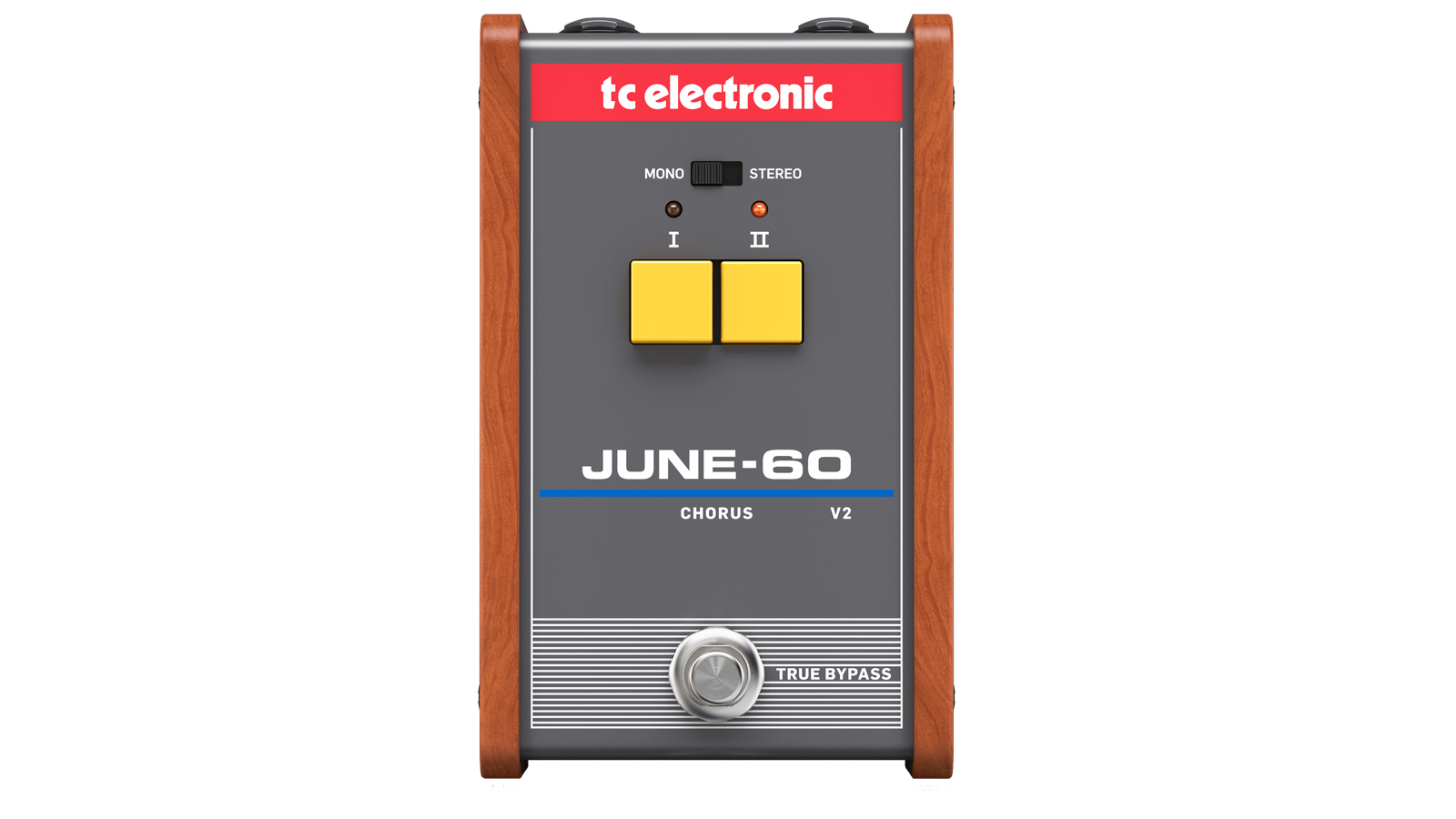
2. TC Electronic June 60 V2
Our expert review:
Specifications
Reasons to buy
Reasons to avoid
✅Buy if you're short of cash: Costing well below the $/£100 mark this bargain chorus pedal is a great way to get lush tones on your 'board for a lot less.
❌Avoid if you're short on pedalboard space: This is quite a hefty pedal, so if you've got a tonne of effects on your pedalboard you might have to sacrifice something else for it.
The original June 60 was a bargain with great sounds and high-brow styling, now it's got a V2 with an extra mode, improved stereo outs, and an additional speed setting. Based on the chorus from Roland's legendary Juno 60 synthesizer, it works great on both guitar and bass.
Like the original June 60, it has stereo out, albeit via a TRS jack output, which is more uncommon for guitar. Still, with a BBD chip at its heart, it's an all-analog vintage-voiced stereo chorus for not much more than the price of an unbranded micro pedal. It absolutely gives you the classic tones of the original and sounds beautiful paired with an overdrive or fuzz pedal.
There are three new settings too - on the front panel, you can access Leslie-like rotating speaker sounds by pressing down both preset buttons. Internally, there's now also a pair of DIP switches that allow you to change the LFO speed between 'slow' and 'fast'. Although it's less exciting, there's also a DIP switch for guitar versus keys input level.
Best mini
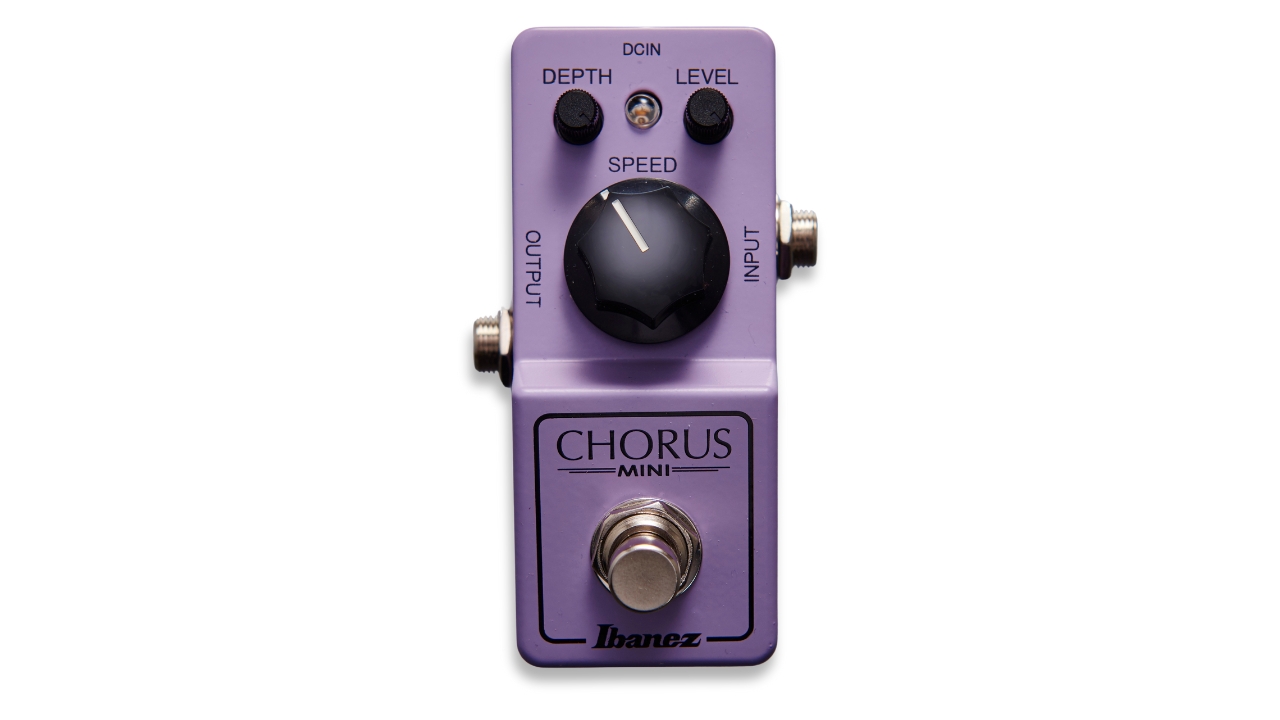
3. Ibanez Chorus Mini
Our expert review:
Specifications
Reasons to buy
Reasons to avoid
✅Buy if you want a space-saving chorus pedal: This teeny-tiny pedal gives you all the classic chorus tones without having to sacrifice another pedal for the privilege.
❌Avoid if you've got big hands: The small knobs can be pretty tough to navigate if you've got big hands.
For those who are short on space, the Ibanez Chorus Mini should whet your appetite for 80s chorus tones, as well as leaving you plenty of space for more guitar pedals. Whether you just want to dabble or you're a full-blown chorus addict, it's a great choice.
The Chorus Mini delivers those classic 80s chorus tones and is super versatile despite only having three controls. You can get a really deep, seasick-style sound, Leslie-rotary-type effects, or just add a subtle bit of thickening to your guitar tone.
It's robustly built too, with an all-metal enclosure and rugged build that will put up with regular stomping. The footswitch is tilted slightly towards you, which could come in handy if it's on the top rows of your pedalboard. Some may find the small knobs a little awkward, but overall it's a fantastic choice if you're trying to save space on your 'board.
Best stereo
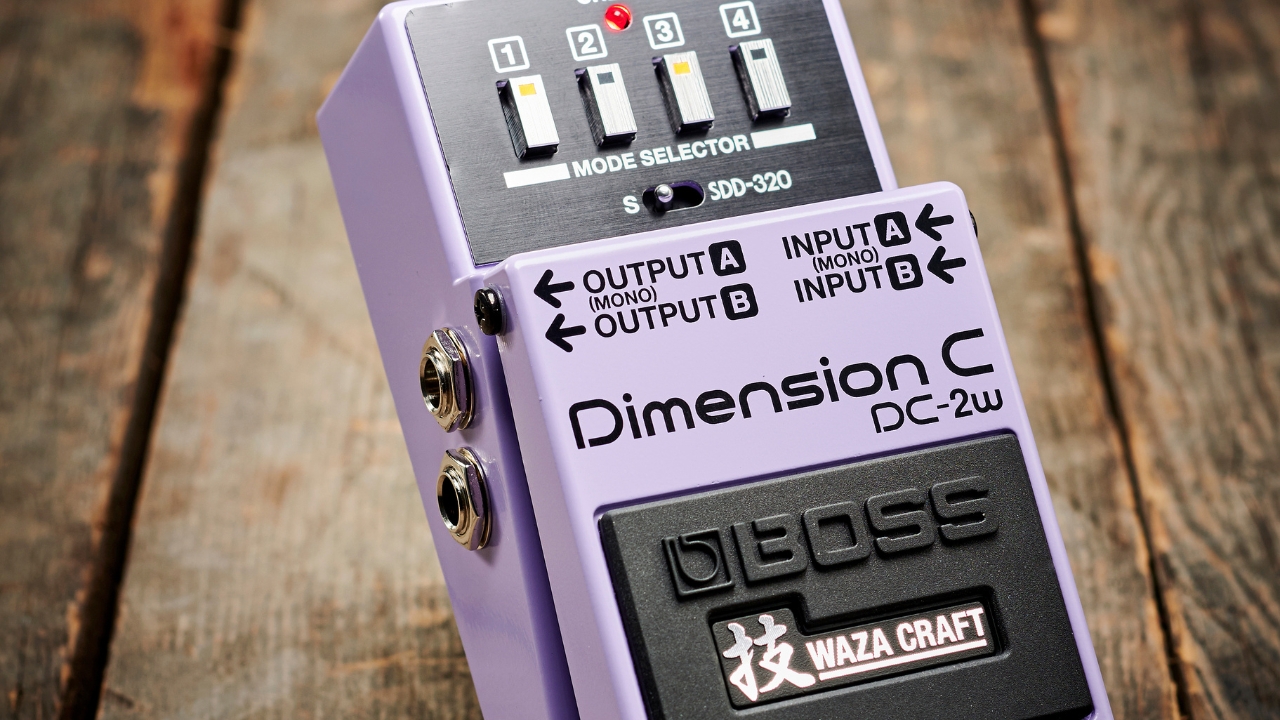
4. Boss DC-2W Dimension C
Our expert review:
Specifications
Reasons to buy
Reasons to avoid
✅Buy if you want stereo chorus sounds: With stereo ins and outs, the DC-2W is the perfect choice for those who run stereo rigs, giving you a wider stereo spread and thicker tone.
❌Avoid if you're after classic chorus tones: This doesn't do the seasick, warbly sounds of some of the other pedals so avoid if you're after a more extreme effect.
One of the most-requested reissues in Boss’s history, the DC-2W recreates the DC-2 Dimension C, which strikes the balance between a chorus and a 3D audio expander. Based on the unit used by SRV to thicken his guitar tone in the studio, this is a more subtle form of chorus that works great in stereo rigs.
The DC-2W provides a relatively subtle effect via its four push-buttons but can make any signal sound bigger and richer – especially in stereo. It really widens the spread of your sound through two amps, resulting in a thicker, enriched tone. This reissue also adds a model of Roland’s SDD-320 Dimension D rack effect, which lends its own flavor of spatial widening.
The ability to select two buttons at once alongside the single-button options gives you ten tones overall, so there's plenty to dig into here. If you’ve liked the sonic effect and tonal thickening – but not the warble – of traditional chorus pedals, the DC-2W could well be the best choice for you.
Best for bass
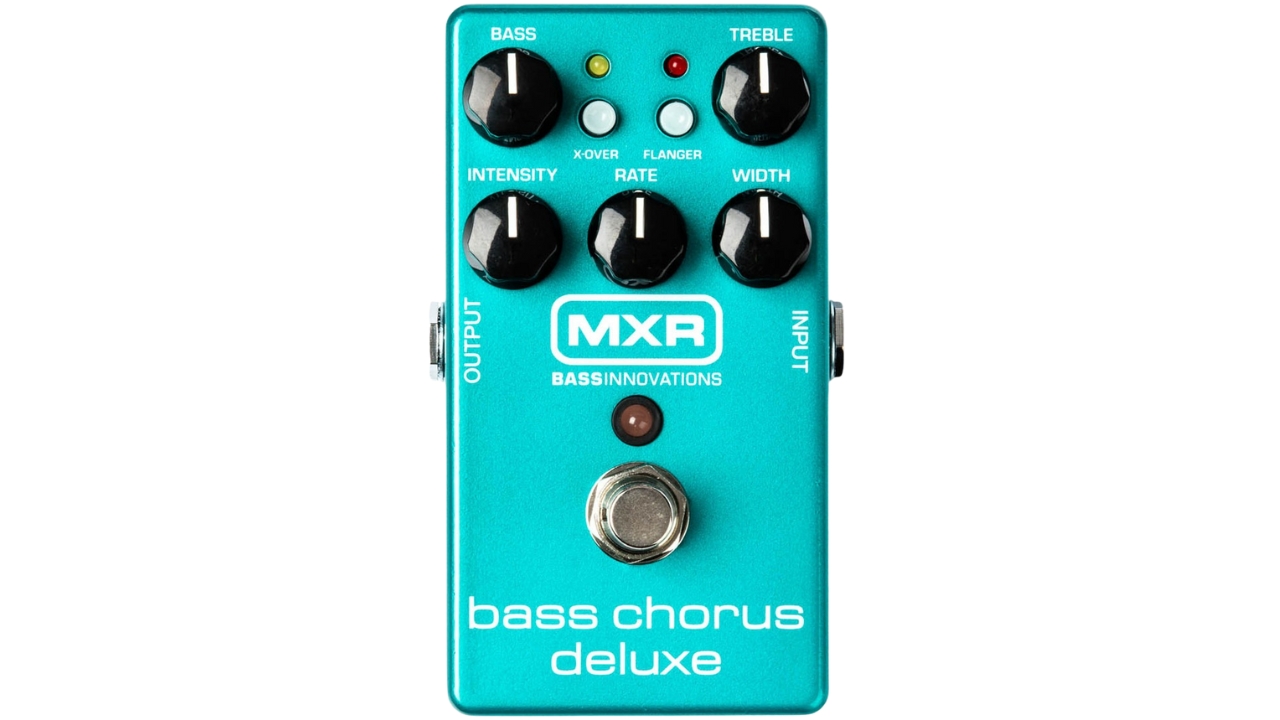
5. MXR M83 Bass Chorus Deluxe
Our expert review:
Specifications
Reasons to buy
Reasons to avoid
✅Buy if you want chorus tones for your bass: Specifically designed to play nicely with the low stuff, this is the perfect chorus pedal for bass guitarists.
❌Avoid if you want a more extreme sound: This quite a 'clean' sounding chorus pedal, great for blending with your existing bass tone so look elsewhere if you want something with a heavier effect.
Chorus is a really popular effect on bass guitar, great to use as a thickener or just to add some movement to your tone. The MXR M83 Bass Chorus Deluxe is a great choice for bassists, delivering awesome chorus tones without clouding your core tone.
The variety of controls means you can dial in a huge array of sounds, whether you like your choruses subtle or hitting that full-on warble. All the while it never overpowers your overall sound, instead giving it a nice movement that enhances without going overboard.
The flanger mode is really useful too, giving you an additional tone option should you need it. You can also access a stereo mode via an internal dipswitch located inside the pedal. We found the crossover button to be a little too powerful, killing the sound of the pedal and while it may be a little too subtle for some, for the majority of bassists it'll be just the ticket.
Best features
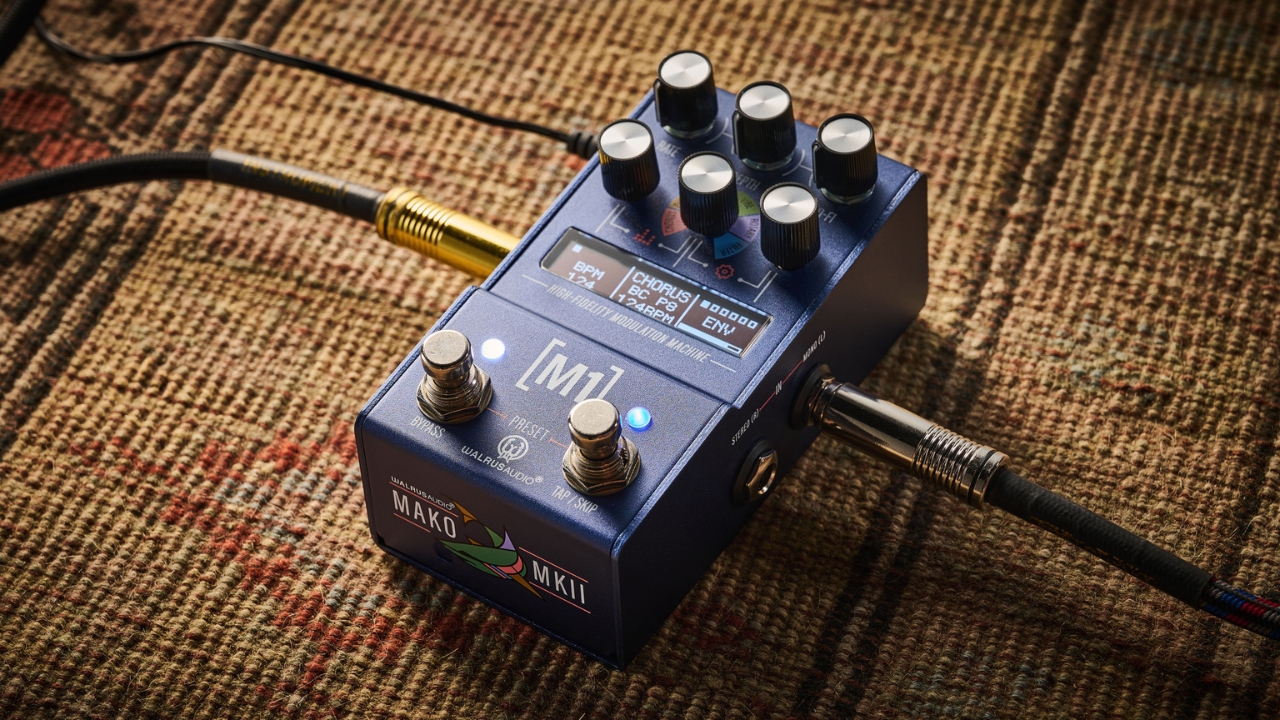
Specifications
Reasons to buy
Reasons to avoid
✅Buy if you want studio-grade chorus tones: With superb quality sound, stereo compatibility, and lots of parameters to tweak, the M1 offers a fantastic array of chorus sounds.
❌Avoid if you like simplicity: This is closer to a multi-effects pedal than an outright chorus pedal, so avoid if you want a pedal to do one job only.
The Mako M1 was a complex but deep pedal, with studio-grade sounds crammed into a compact chassis. To this, the MKII edition sees updated rotary and filter algorithms, as well as a new flanger mode.
On the front panel, there's the welcome addition of a 2" OLED display to aid user navigation and control. Crucially for a pedal of this complexity, it's also stereo, making it not only a one-stop shop for chorus but also for stereo modulation in general.
Though it's not much larger than a standard-size BOSS pedal, it's got almost every modulation option you could want covered, from chorus to phasers, tremolo, vibrato, rotary pedals, and filters. Each option has three patches, and the sound quality is excellent.
The main drawback is that despite the screen it's a dense pedal, especially for its size. Without it, it would be almost impossible to navigate, but even so, it's tricky. It's got the feature set of a physically much larger pedal, like a Strymon or BOSS 500 series but a smaller form factor. This saves space but at the slight cost of usability.
Read our full Walrus Audio Mako M1 MKII review
Also consider
For us, the above pedals should have pretty much every guitarists chorus needs in hand. That said, we do appreciate there's no one size fits all solution, so here are some more great suggestions for you to look at.
Eventide TriceraChorus
Chorus & vibrato | Stereo | 9V
Eventide’s TriceraChorus is a chorus pedal that combines three separate chorus voicings – as well as Eventide’s MicroPitch detuning and a Swirl footswitch – in order to create a rich, versatile effect. Whether you’re using the TriceraChorus in mono or stereo, expect to hear your tone broadened to a level that most other chorus pedals won’t achieve.
★★★★½
Read more: Eventide TriceraChorus review
Way Huge Smalls Blue Hippo Analog Chorus
Chorus & vibrato | Mono | 9V
The Way Huge Smalls Blue Hippo Analog Chorus is a miniaturized, pedalboard-friendly doppelganger of the original, preserving the same features and sweet tones in a compact pedal footprint. Though it’s not sized as a typical mini-pedal, it’s still small enough to fit into the palm of your hand and is less boxy than its original counterpart, making it super pedalboard-friendly.
★★★★½
Electro-Harmonix Neo Clone
Chorus | Mono | 9V
Best known for the shimmery warble that opens Nirvana’s Come As You Are, the Small Clone is much more than just the preferred chorus unit of Kurt Cobain – and it’s now available in EHX’s more compact Nano enclosure. Its rich, spacey, and fully analog tones offer tons of an otherworldly vibe, in a straightforward, easy-to-use design. What’s more, it’s got an easy-on-the-wallet price as well.
★★★★☆
TC Electronic Corona Mini Chorus
Chorus | Stereo | 9V
If you want a straight-up, easy-to-operate, and most of all, great-sounding chorus pedal, look no further than TC Electronic’s Corona. A pared-down (at least in its looks) take on the company’s legendary – and considerably more expensive and involved – Stereo Chorus Flanger unit, the Corona is a compact digital pedal boasting just four knobs – Speed, Depth, FX Level and Tone, as well as stereo and mono ins/outs.
★★★★☆
FAQs
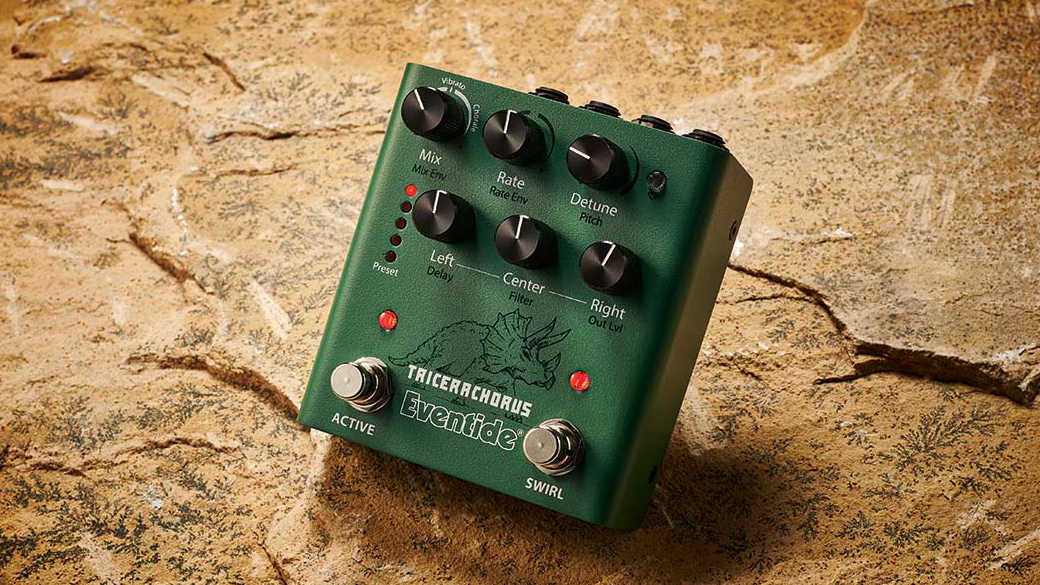
What is chorus?
Chorus is an effect created using a delay line, like vibrato, phase, and flange. The guitar signal is split into wet and dry components, with an LFO, or low-frequency oscillator, detuning the wet part. Blending wet and dry back together creates the chorus effect.
Terms like LFO might be bamboozling at first glance, but think of it simply as the rate control, a sine wave that you can hear giving motion to the guitar.
There are also interesting side effects from the close relationship between the various modulations. For example, increasing the wet/dry mix will result in a vibrato effect when the detune becomes more extreme. Alternatively, by reducing the delay time below 25ms, chorus becomes a flanger. Flange effects often add feedback for more resonance, which is why chorus effects sound smoother.
This line can be blurry. Famously, Andy Summers didn't use a chorus on The Police's Walking On The Moon. It's reportedly an EHX Electric Mistress flanger, which explains his signature pedal.
What should I look for in a chorus pedal?
The key areas you should look at when buying a chorus are the range of speed and depth, whether it's digital or not, and whether it's stereo.
It's important to look deeply within yourself and decide whether you're a purist. There's something magical about the sound of a pure BBD analog chorus, but it's undeniable that digital choruses have more flexibility, not only in timbre but also in additional parameters like rate and waveform. Some units can even do ramping or irregular rates.
Whether or not the pedal is stereo won't matter to you if you don't run a dual amp set-up. Nevertheless, it might be that even if you use the pedal in mono, you'll get a chance to use it in stereo for recording. There are few things quite as awesome as stereo chorus.
Finally, range is important. If you want seasick, detuned tones, you'll need appropriate depth. If you want to push the rate of the pedal into Leslie territory for live use, the pedal will need a rate control that is fast when cranked.
What's the difference between analog and digital chorus pedals?
In a word: versatility. Analog pedals have an authentic tone and mojo, but their functionality is limited as they're built around a BBD (bucket-brigade device) chip. Digital pedals can offer more tones since options aren't different circuit paths but software.
Tonal purists will want to audition the available analog options and find a voicing that works for them. Chief among these are the Boss CE-2W for smooth Roland amp chorus tones, the stereo workhorse DC-2W, and the Juno synth emulation TC June-60 v2. The voice of these three pedals is unique, and each is likely to appeal to the taste of different players.
Those who value versatility instead are likely to beeline for digital offerings. There are units like the Fender Bubbler and Walrus Julia that add additional functionality onto an analog core, but they're rare. Digital chorus pedals can not only beat the functionality of even the most advanced analog devices, with ramping and waveform controls but also model classic circuits of the past. Moreover, this needn't come at a huge cost. The TC Corona Mini, for example, boasts good models as well as Tone Print, without a flagship price.
We've already mentioned it, but it bears repeating - there are analog and digital stereo options, so if you have a dual-amp rig then make sure you try a stereo chorus pedal out. The 3-D effect of stereo chorus is one of the most larger-than-life effects available, and it's worth auditioning it at the least.
How we test
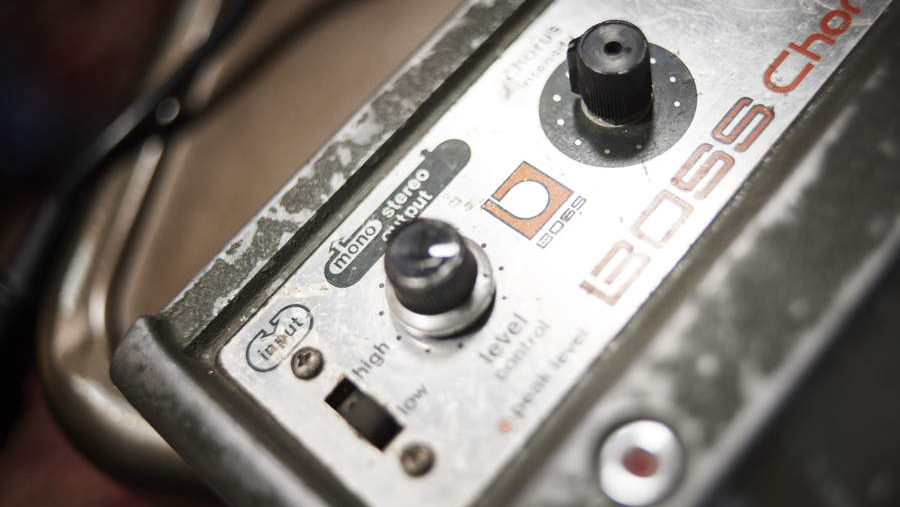
Here at Guitar World, we are experts in our field, with many years of playing and product testing between us. We live and breathe everything guitar-related, and we draw on this knowledge and experience of using products in live, recording and rehearsal scenarios when selecting the products for our guides.
When choosing what we believe to be the best chorus pedals available right now, we combine our hands-on experience, user reviews and testimonies and engage in lengthy discussions with our editorial colleagues to reach a consensus about the top products in any given category.
First and foremost, we are guitarists, and we want other players to find the right product for them. So we take into careful consideration everything from budget to feature set, ease of use and durability to come up with a list of what we can safely say are the best chorus pedals on the market right now.
Read more about our rating system, how we choose the gear we feature, and exactly how we test each product.
Related buying guides
You can trust Guitar World
- Get all wobbly with the best tremolo pedals
- Need more dirt? These are the best fuzz pedals for your ‘board
- The 10 best distortion pedals for guitarists
- Check out the best Tube Screamer clones
- Check out the best delay pedals for all budgets
- 12 killer cheap guitar pedals you need to try
All the latest guitar news, interviews, lessons, reviews, deals and more, direct to your inbox!

Mike has been Editor-in-Chief of GuitarWorld.com since 2019, and an offset fiend and recovering pedal addict for far longer. He has a master's degree in journalism from Cardiff University, and 15 years' experience writing and editing for guitar publications including MusicRadar, Total Guitar and Guitarist, as well as 20 years of recording and live experience in original and function bands. During his career, he has interviewed the likes of John Frusciante, Chris Cornell, Tom Morello, Matt Bellamy, Kirk Hammett, Jerry Cantrell, Joe Satriani, Tom DeLonge, Radiohead's Ed O'Brien, Polyphia, Tosin Abasi, Yvette Young and many more. His writing also appears in the The Cambridge Companion to the Electric Guitar. In his free time, you'll find him making progressive instrumental rock as Maebe.
- Alex Lynham
- Matt McCrackenJunior Deals Writer
